Are some of your best-selling skincare products wrinkle fighters, dark spot lighteners and moisture infusers? From those first fine lines to deep-set creases, many men and women want to turn back the hands of time—and they’re coming to you for help.
Retailers, get ready to learn how skincare products support skin’s natural elements to plump, smooth and moisturize. Take home message: natural does wonders for the skin.
It’s an Inside Job
Any skincare product that makes it onto your shelves should be more than just a pretty package. You know better than anyone that if a product doesn’t work, it’s wasted space and lost profit. Not to mention, it could shake  confidence in your offerings.
confidence in your offerings.
The stakes are especially high for anti-aging skincare. Shoppers should know such products won’t give them a facelift. But, they do offer some amazing benefits, from the inside out.
Getting down to it. Let’s work our way down through the skin’s layers to see how skincare products fit in. The outer layer, called the stratum corneum, is composed of dead skin cells. Scrubs and peels can help remove build-up and thin out the layer so that healthier, younger cells show through (1).
Next up is the epidermis. Though they are the thinnest layers, the epidermis has the enormous job of protecting the skin from environmental toxins and UV light. Here is where malanocytes make melanin, which creates skin pigmentation (remember this for later). Keratin is also found in these layers, which adds strength, flexibility and waterproofing. Plus, vital langerhans cells offer immune support (1).
Now, onto the middle layer or the dermis (which lies on top of the hypodermis). The dermis layer holds some of the keys to anti-aging support, including the proteins collagen and elastin (1). “Collagen and elastin provide the foundation for skin, giving it its structural appearance,” states Linda Miles, D.O.M., vice president of derma e Natural Bodycare, Simi Valley, CA.
Elastin is like a trampoline, says Audra Klein, national educator for Botanique by Himalaya, made by Himalaya Herbal Healthcare, Sugar Land, TX; it offers “resilience to the skin as it maneuvers and stretches throughout life. Elastin allows for shape and tautness to be effortlessly upheld.” If elastin is healthy and nourished, it helps the skin remain supple and “evade the sagging effects of gravity and fine lines of time,” Klein explains.
 Collagen, meanwhile, is a bungee cord, she says. It adds “bounce” and plumpness to the skin, which helps maintain a youthful appearance. “Together, the synergistic duo endeavor to form infrastructures imbuing all skin, especially that of the face, with those coveted attributes of velveteen touchability, refreshed dewiness and age-defying vitality,” states Klein.
Collagen, meanwhile, is a bungee cord, she says. It adds “bounce” and plumpness to the skin, which helps maintain a youthful appearance. “Together, the synergistic duo endeavor to form infrastructures imbuing all skin, especially that of the face, with those coveted attributes of velveteen touchability, refreshed dewiness and age-defying vitality,” states Klein.
The problem is that over time, collagen and elastin diminish—leaving what some feel are undesirable problems. “As we age, collagen breaks down and production slows, contributing to the formation of fine lines and wrinkles,” says Miles, adding, “Elastin fiber production also slows and these proteins lose resilience, which can lead to sagging skin and loss of firmness.”
The causes of this degradation are two-fold, according to Lisa Polley, director of education and business development at Jurlique, Santa Monica, CA. She identifies the chief contributors like this: 1) genetic factors that are part of normal aging, and 2) environmental factors like sun exposure, pollution and things we can control.
The natural and age-related breakdown of skin’s supporting structure is an important point to explain to shoppers. In short, the anatomy of mature skin is very different than that of a younger person, and thus warrants special care. “Mature skin is thinner than young skin. It dehydrates faster, forms wrinkles and reacts to environmental influences more easily. This is caused by less collagen and elastin being produced leaving the skin less vital and resistant. The skin’s barrier is weakened,” explains Eileen Sheets, managing director of Bioforce USA, Ghent, NY.
She believes that skincare products for mature skin should:
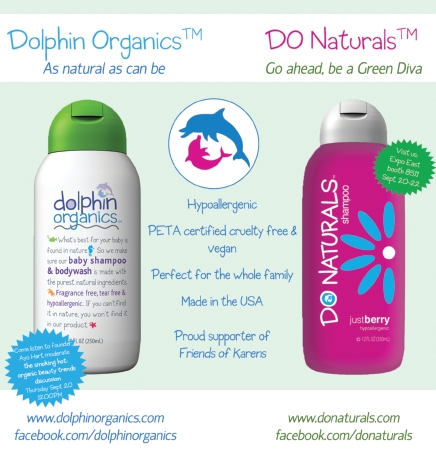 1. Protect against irritation from UV rays and environmental toxins
1. Protect against irritation from UV rays and environmental toxins
2. Stimulate regeneration at night
3. Strengthen the skin’s barrier
4. Not be too rich
The good news is many nutrients address these points by bolstering the skin’s structure. These nutrients—from vitamins to minerals to peptides to antioxidants—are often effective in combination for a healthy foundation, according to Tim Schaeffer, senior vice president of marketing at Mineral Fusion, Denver, CO. “The entire system needs supplementing, not just a single aspect,” he states.
Elastin and collagen support. A natural place to start is with serums, creams and lotions that incorporate soluble collagen and elastin. According to Karen Ress, executive director of national sales for Aubrey Organics, Tampa, FL, collagen products are very beneficial to those who want to maintain youthful-looking skin. “Applied topically, collagen helps to attract and retain moisture for smooth and soft skin, increase elasticity and diminish the appearance of fine lines and wrinkles (2),” she states.
Stephen Strassler, president of Reviva Labs, Haddonfield, NJ, feels collagen creams (and more recently serums) are especially helpful when used with products containing hydrolyzed elastin. Rajeev Prasad, vice president of sales at Mill Creek Botanicals, Las Vegas, NV, adds, “By using a good elastin cream to supplement your body’s natural production, you can keep your skin looking youthful and vibrant.”
Strassler agrees, noting, “Elastin controls the elasticity of skin fibers and, thus, alternating with collagen cream has been a popular duo to aid skin firmness, an aging problem, for many years.”
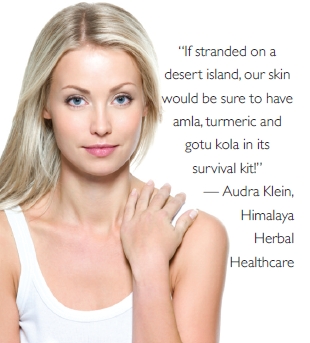 While these have historically been, and continue to be, popular products, companies are continuing to innovate the field of collagen and elastin support.
While these have historically been, and continue to be, popular products, companies are continuing to innovate the field of collagen and elastin support.
For instance, Strassler says companies like his are adding dimethylaminoethanol (DMAE) to skin-firming products. A 2009 study on mouse and human skin (in vivo) highlighted DMAE’s muscle-toning ability (3). DMAE creams were applied to the skin and throughout the eight-week study, researchers measured skin hydration, thickness and elasticity. The formula was found to increase dermal thickness, collagen fiber thickness and water content.
Other innovations include peptides, specifically palmitoyl tripeptide-3. According to Strassler, “[It] is unique in that it can repair and renew damaged collagen.” This is noteworthy because sun-damaged skin often contains collagen with “damaged DNA,” he explains. “Thus, collagen’s water-binding capacity is reduced. With water loss, skin firmness and moist texture is affected,” Strassler explains. Palmitoyl tripeptide-3 also stimulates new collagen production “so that current and new collagen are both improved,” he feels.
Botanicals cannot be ignored. In fact, Klein calls amla “one of collagen’s most beloved allies.” Corcoran is also an amla fan, noting that its anti-aging benefits may come from the fact that it’s a highly water-soluble and stable antioxidant.
Amla functions like a girdle by tightening 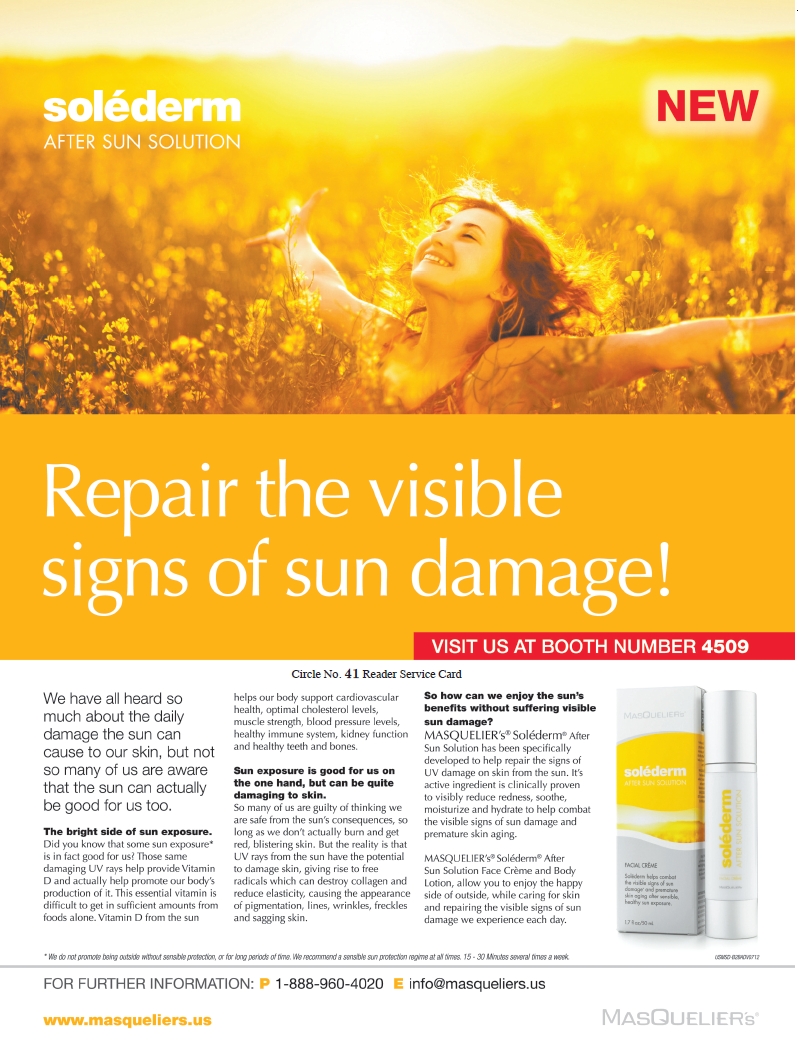 collagen’s cross-fixing matrix and giving it fullness and bounce. On the elastin front, it supports cell membranes and prevents oxidative damage. This results in “a more taut, even appearance,” says Klein.
collagen’s cross-fixing matrix and giving it fullness and bounce. On the elastin front, it supports cell membranes and prevents oxidative damage. This results in “a more taut, even appearance,” says Klein.
Also on Klein’s list of collagen/elastin supporters is turmeric, which protects and nourishes both elastin and collagen. “Among the list of beneficial qualities, turmeric has been found to improve collagen deposition, curtail free-radical action as an effective photo-aging inhibitor and increase viscoelasticity,” Klein states.
She also feels gotu kola is worth mentioning since the antioxidant encourages collagen synthesis, protects skin from UV rays and offers anticellulite capabilities.
Rose hip seed oil is another anti-aging botanical described by Ress, who says its benefits are directly related to skin structure support. Her company markets a patented form: “Organic Rosa Mosqueta aids in increasing collagen and elastin production and also aids in increased cell turnover. Naturally rich in essential fatty acids (EFAs), as well as vitamin C and natural retinoic acid (carotenoids), it restores moisture balance for a younger looking complexion."
Miles weighs in with even more ingredients that support collagen and elastin health. These include:
• Alpha lipoic acid, which Miles calls the “universal antioxidant” because it recycles other antioxidants and repairs skin damage.
• Pomegranate, because it promotes dermis regeneration, protects collagen and boosts collagen production, says Miles.
• Matrixyl, a peptide that “helps collagen synthesize new key components, therefore helping skin restructure and repair itself,” according to Miles.
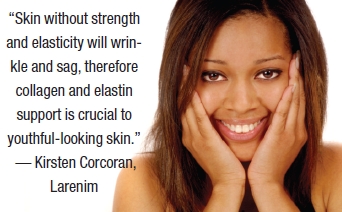 And, Polley adds several other unique ingredients like blue algae extract, which is said to “firm skin like retinols without the sensitivity,” rock samphire extract, which supports skin density and softens the appearance of wrinkles, beech tree bud extract for strengthening and firming skin, and marshmallow and sodium hyaluronate for moisture and suppleness.
And, Polley adds several other unique ingredients like blue algae extract, which is said to “firm skin like retinols without the sensitivity,” rock samphire extract, which supports skin density and softens the appearance of wrinkles, beech tree bud extract for strengthening and firming skin, and marshmallow and sodium hyaluronate for moisture and suppleness.
And, OPCs are said to support collagen tissue by inhibiting enzymes that degrade collagen and stabilizing vitamin C (which is needed for collagen production), according to Masquelier’s USA.
Well-known collagen supporters remain invaluable to the skincare category, too. Schaeffer underscores the importance of minerals, which “promote the energy production of cells that is used to help create more collagen and elastin.”
Meanwhile, Prasad suggests vitamin C, “which you need to naturally produce collagen.”
This antioxidant (including unique and highly potent sources like amla and Kakadu plum) counteracts the damage caused by free radicals. “These contribute to accelerated aging of skin cells, causing discoloration, uneven tone, lines, wrinkles, dryness and rough texture,” Polley states.
Corcoran adds to this by noting that 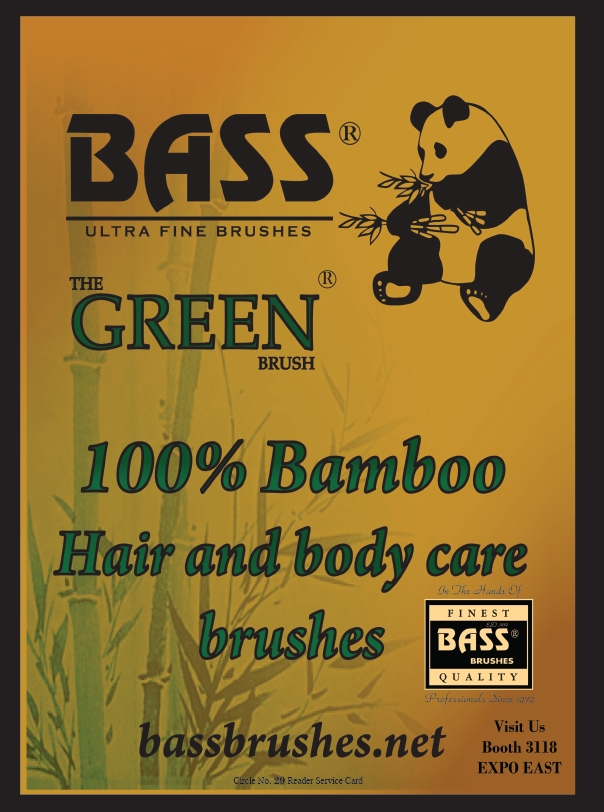 magnesium ascorbyl phosphate is a good choice. This water-soluble, non-irritating, stable derivative of vitamin C “has the same potential as vitamin C to boost skin collagen synthesis but is effective in significantly lower amounts,” she believes.
magnesium ascorbyl phosphate is a good choice. This water-soluble, non-irritating, stable derivative of vitamin C “has the same potential as vitamin C to boost skin collagen synthesis but is effective in significantly lower amounts,” she believes.
The sunny side. Polley raised the issue of sun exposure as a contributing factor to premature photoaging of the skin. While exposure to UV light does some good for vitamin D synthesis, overexposure can cause problems. According to literature from Masquelier’s USA, too much UVA exposure could damage cellular proteins, lipids, saccharides and dermal blood vessels. UVB could cause free radical damage and reduce skin’s ability to protect itself. Thus, sun screens cannot be ignored for anti-aging.
But in addition, companies are innovating new ways to let shoppers enjoy the sun, including Masquelier’s. A new offering (Soléderm After Sun Solution) incorporates OPC’s, which studies indicate decreases UV-induced skin inflammation and improves skin hydration, “two key factors that might potentially prevent rapid skin aging and help restore it.” The company says inflammation and redness are reduced in three days of application.
Plant Stem Cells: Turning Over a New Leaf
In 2009, University of Toronto researchers furthered our understanding of how the skin self-renews. They discovered that stem cells in hair follicles were migrating to the skin. “The primary role of all adult stem cells in a living organism is to maintain and repair the tissue in which they are found,” Corcoran explains. “Specific tissue has specific adult stem cells. If a specific adult stem cell malfunctions, then the health of that tissue is consequently compromised.” Thus, the dermatology community hailed the Toronto research as a new piece in the skin rejuvenation puzzle.
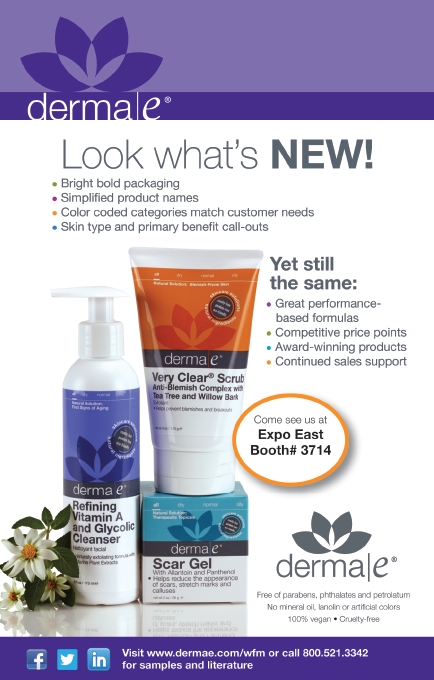 Protecting these human cells is what argan stem cells in skincare products are all about. States Corcoran, “Argan stem cell extract has been demonstrated by scientists to revitalize dermal stem cells and consequently rejuvenate collagen and elastin…In essence, one might theorize that revitalizing the dermis could offer aged skin a second chance by combating wrinkles and loss of firmness at the formation site, which is the dermis.”
Protecting these human cells is what argan stem cells in skincare products are all about. States Corcoran, “Argan stem cell extract has been demonstrated by scientists to revitalize dermal stem cells and consequently rejuvenate collagen and elastin…In essence, one might theorize that revitalizing the dermis could offer aged skin a second chance by combating wrinkles and loss of firmness at the formation site, which is the dermis.”
Researchers are experimenting with other types of plant stem cells, too. For instance, Swiss apple stem cells are said to protect human stem cells found in the skin from UV damage; Edelweiss stem cells may prevent collagen and hyaluronic acid degradation; date palm stem cells may help keep skin hydrated; and gotu kola stem cells may firm and support skin structure (4).
How likely is it that consumers will latch on to plant stem cells? Corcoran says they will, especially if information about it is available. Retailers can play a vital role with such education. “Stem cell technology may now seem lofty and too high tech to many consumers, but with all the information resources available today, people will certainly be lured by the very impressive capabilities of the skin care products that use this technology,” she states.
Out, Dark Spot, Out!
You may have noticed a new category of anti-aging products come your way: skin lighteners. Mainstream companies in the past few years have marketed such products and now natural companies are launching their own solutions.
Hyperpigmentation (AKA brown, dark or age spots) occurs when the skin makes too much melanin in response to inflammation. Though certain health conditions cause this to occur, frequent sun exposure is often to blame.
Many women aren’t fans of these spots when they 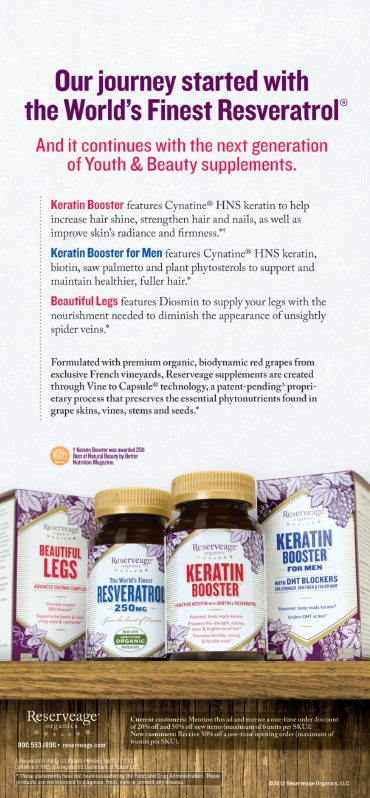 appear, and are interested in skin lighteners and brighteners as solutions. Strassler explains how they work: “The basic objective of these ingredients is to suppress or inhibit the production of melanin (skin’s dark pigment). As less melanin reaches the surface, brown spots can gradually get lighter with more even skin tone.”
appear, and are interested in skin lighteners and brighteners as solutions. Strassler explains how they work: “The basic objective of these ingredients is to suppress or inhibit the production of melanin (skin’s dark pigment). As less melanin reaches the surface, brown spots can gradually get lighter with more even skin tone.”
While such products should only be used on their targeted areas, shoppers shouldn’t worry about unintentionally lightening other areas of the skin. Says Miles, “These products are designed to breakup melanin therefore over-lightening surrounding skin would not occur.”
Retailers can safely say these products don’t bleach skin. “They will simply eradicate the excess pigment,” says Corcoran.
In contrast, skin lighteners and brighteners are gentle, and Miles says some offer extra benefits. She uses Madonna Lily as an example, which has “the ability to interfere with the transfer of melanin as well as increase cellular renewal (that forces out the melanin) promoting lighter, brighter skin.”
Other hyperpigmentation support ingredients include alpha-arbutin, bearberry, mulberry, lime, licorice root, vitamin C, ascorbyl phosphate and resveratrol.
If shoppers don’t see results right away, remind them that products aren’t a quick-fix. Says Strassler, “It takes time, and other factors like sun protection and exfoliation are important, too.”
Ress feels battling hyperpigmentation involves “gently exfoliating your skin a few times a week…to remove dead skin cells and increase cell turn over by moving healthy skin cells to the surface.” Then, “protect your skin using a sunscreen containing natural minerals under your daily moisturizer to discourage further pigment being deposited into your skin.”
Mineral Make-Up How-To’s
• Do I need a special brush to apply mineral makeup?
• Can I use mineral makeup if my skin is dry?
• Do I still need to apply sunscreen with mineral makeup?
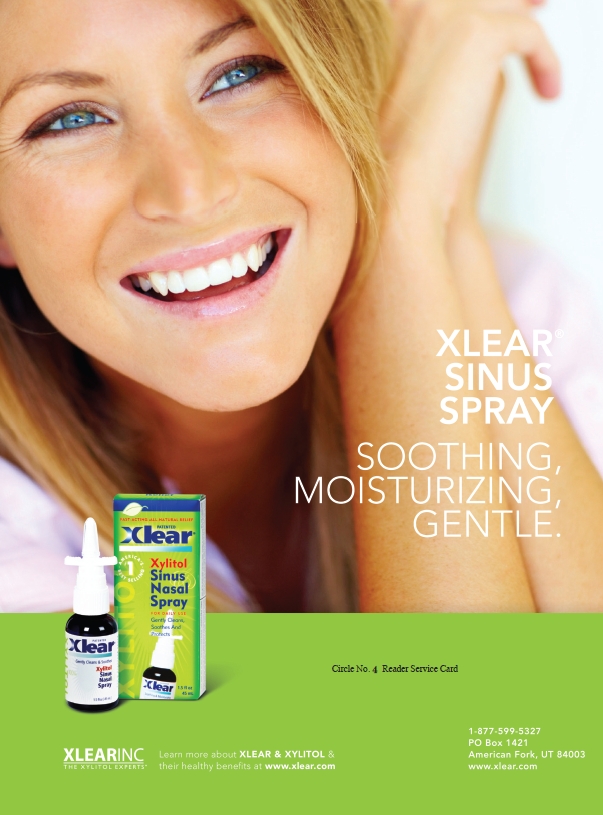 Mineral makeup may already be a staple of your personal care section, but you might miss out on some sales if you can’t give practical advice about these products. Not to worry; here, makeup experts fill you in with answers to some FAQs.
Mineral makeup may already be a staple of your personal care section, but you might miss out on some sales if you can’t give practical advice about these products. Not to worry; here, makeup experts fill you in with answers to some FAQs.
What are the benefits of mineral makeup? First, many women find it less irritating than traditional products. States Schaeffer of Mineral Fusion, “Mineral makeup is more inert, meaning it rests on the skin and doesn’t react with it like conventional makeup.”
This means that those with sensitive skin often do well with mineral makeup. Corcoran points out it usually doesn’t cause clogged pores, acne, irritation or allergic reaction. In contrast, it’s very soothing. “I have had many Larenim users report to me that they believe their skin is actually healthier looking due to having worn our makeup,” she says. “I have had a number of women tell me that our eye colors are the only eye cosmetics that do not irritate their eyes.”
Also, pure mineral makeup contains 100% minerals and no chemicals or fillers. “For people with sensitive skin, this is particularly advantageous because you are putting only the several ingredients that are providing coverage and natural sunscreen on the skin, rather than dyes, parabens or other questionable ingredients that can cause irritation,” says Terresa Clark, creative director for Alima Pure, Portland, OR.
Corcoran adds that mineral makeup holds up better in heat and humidity and also gives a more natural appearance than traditional products.
Finally, mineral makeup often contains titanium dioxide and/or zinc oxide, which offer protection from the sun, “even if you don’t see an SPF rating on the product,” states Schaeffer.
How do I apply powdered mineral makeup? Do I really need those special brushes? The application of powdered mineral makeup is quite different from traditional makeup. “In my opinion, applying mineral makeup can be far easier to apply than conventional, liquid-type makeup,” states Corcoran.
The loose powder mineral variety offers a custom, natural  foundation in a sense, thanks to its “buildable” application technique. Says Corcoran, “As opposed to spreading a layer liquid foundation over the face, mineral makeup is applied by dipping a brush, known as a kabuki brush, into the minerals and buffing two to three light layers onto the face.”
foundation in a sense, thanks to its “buildable” application technique. Says Corcoran, “As opposed to spreading a layer liquid foundation over the face, mineral makeup is applied by dipping a brush, known as a kabuki brush, into the minerals and buffing two to three light layers onto the face.”
The kabuki brush she references is stout, with a short handle and full, round bristles. Some makeup companies recommend it for loose powders because it offers controlled, even distribution whether it’s a base, bronzer or blush. The brush should be swirled or dabbed into the powder, and then tapped to remove the excess. “The trick to application is to tap off the excess minerals before applying to the face to ensure the minerals don’t drop off before reaching the face,” Corcoran advises.
Clark says after tapping off the extra foundation, “You should see only a slight dusting of foundation when you look at the end of the brush.” Then, use downward strokes to apply to the skin.
This is a slightly different technique than Corcoran’s buffing method, which involves applying the makeup using small circles until evenly applied. With either, the process is repeated to cover the face, and additional layers can be added where more coverage is needed.
This layering is an advantage, says Clark. “By applying several sheer layers, rather than one heavier layer, your foundation will wear longer and look more natural,” she explains.
Convey to shoppers that using a good brush makes a world of difference. “An inferior brush will drop minerals or remove the minerals when the user buffs her face,” Corcoran feels.
What do I look for in a good brush? Mineral makeup companies often offer high-quality brushes that are intended for mineral makeup users. For instance, Alima Pure’s #25 Foundation Brush has Taklon bristles, instead of animal hair. “Taklon brushes are guaranteed to be cruelty-free, and are perfect for people who suffer from pet allergies or have sensitive skin,” says Clark. This is noteworthy since those with skin sensitivities are often drawn to mineral makeup. Information about the bruches is available here.
.lark feels that the best brushes for mineral makeup have densely packed bristles placed in a slightly domed shape.
What if I don’t like loose powder? There’s a lot of variety in the mineral makeup category these days. Says Schaeffer, “Loose bases were what originally made mineral makeup popular and are what most consumers are familiar with.” He feels that powdered products tend to offer fuller coverage.
For those who prefer lighter coverage, “pressed bases apply more finely and are layered in application to achieve the desired coverage,” he states. In addition, he adds that new liquid foundations that use minerals are available now, too.
I can’t use mineral makeup if I have dry skin, right? Wrong! “This is a common misconception,” according to Schaeffer. It is absolutely suitable for most, if not all, skin types.
“Liquid foundations do provide some level of moisture to the skin, and if your skin is on the drier side, you may miss this extra moisture when you switch to minerals,” states Clark. So, you may want to tell shoppers who are switching from traditional liquids to mineral powders to also try using a richer moisturizer under their new makeup. “Even women with very dry skin can wear mineral foundation; they may just require a little more moisture before applying,” she explains.
Clark suggests this trick for those with dry skin. First, apply a moisturizer to skin. “Then, mix a small amount of a lightweight moisturizer with your mineral foundation in the palm of your hand. Apply this mixture as you would a tinted moisturizer or liquid foundation. Then, if you would like more coverage, apply a light layer of (dry) mineral foundation over the top in place of a finishing powder,” she states.
A moisture layer has another purpose, too. “The primer will help hydrate the skin and allow mineral makeup to ‘cling’ to the skin better,” Corcoran explains.
Corcoran adds that the key word is “pure” for those worried about drying. “Pure mineral makeup that is formulated with key minerals such as mica, titanium dioxide and zinc oxide will not dry the skin,” she states. Some products incorporate silica, too, which Corcoran says makes “dry skin feel smooth and silky.” Those with dry skin may want to avoid kaolin, which is often used to absorb excess oil. WF
References
1. University of Pennsylvania, “Skin (Integumentary System),” www.pennmedicine.org/health_info/body_guide/reftext/html/skin_sys_fin.html, accessed July 27, 2012.
2. A. Hampton, Natural Ingredients Dictionaries (Organica Press, 2012).
3. K.A. Tadini and P.M. Campos, “In vivo Skin Effects of a Dimethylaminoethanol (DMAE) Based Formulation,” Pharmazie 64 (12), 818–822 (2009).
4. A. Sukumar, “Plant Stem Cells: Breaking New Ground in Skincare,” WholeFoods Magazine, 35 (1), 43 (2012).
Published in WholeFoods Magazine, September 2012










